Your cart is currently empty!
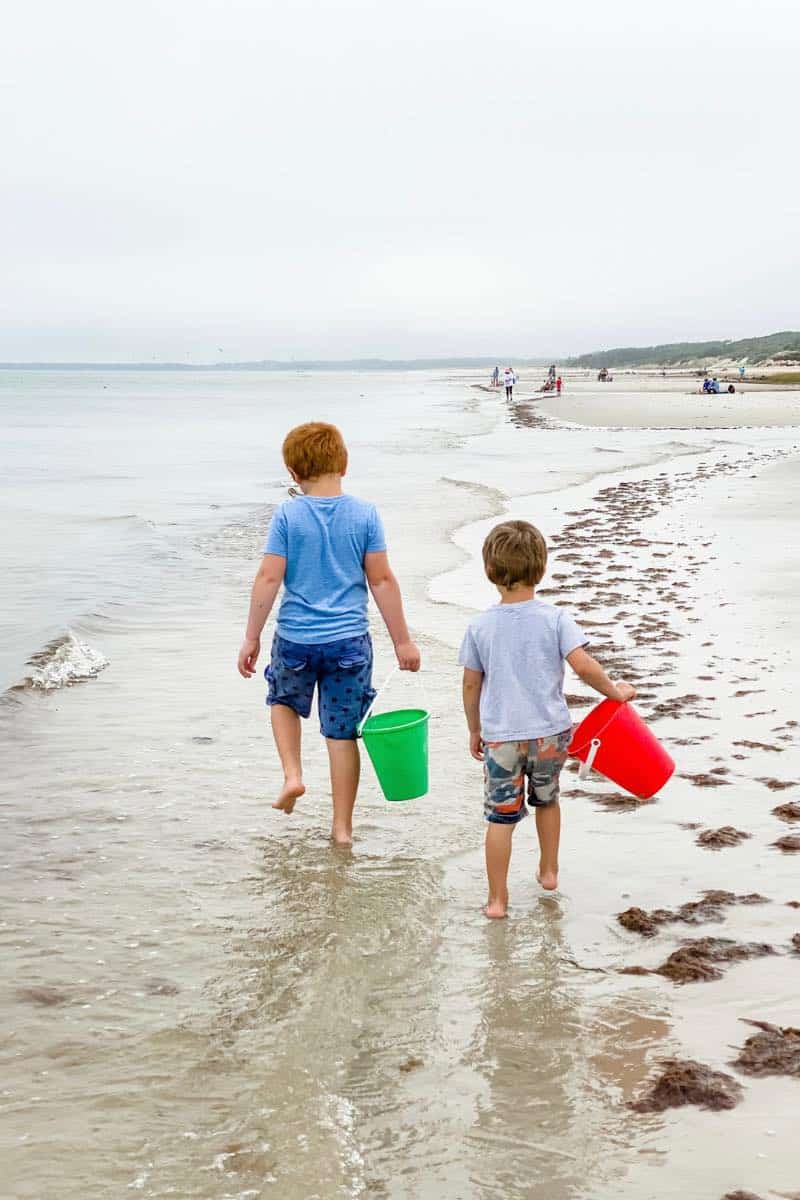
Exploring Tide Pools on Cape Cod
Nestled along the picturesque shores of Cape Cod, Massachusetts, lie an abundance of tidal habitats that beckon curious explorers of all ages. From sandy beaches to rocky outcrops, these captivating tide pools serve as an open-air classroom where kids can immerse themselves in nature’s wonders while fostering a lifelong love for the environment. Today, Lissy Perna, Cape Cod mom of two and founder of Get Outside Cape Cod, is here to help you and your kids explore the beauty of the tidepools of Cape Cod.
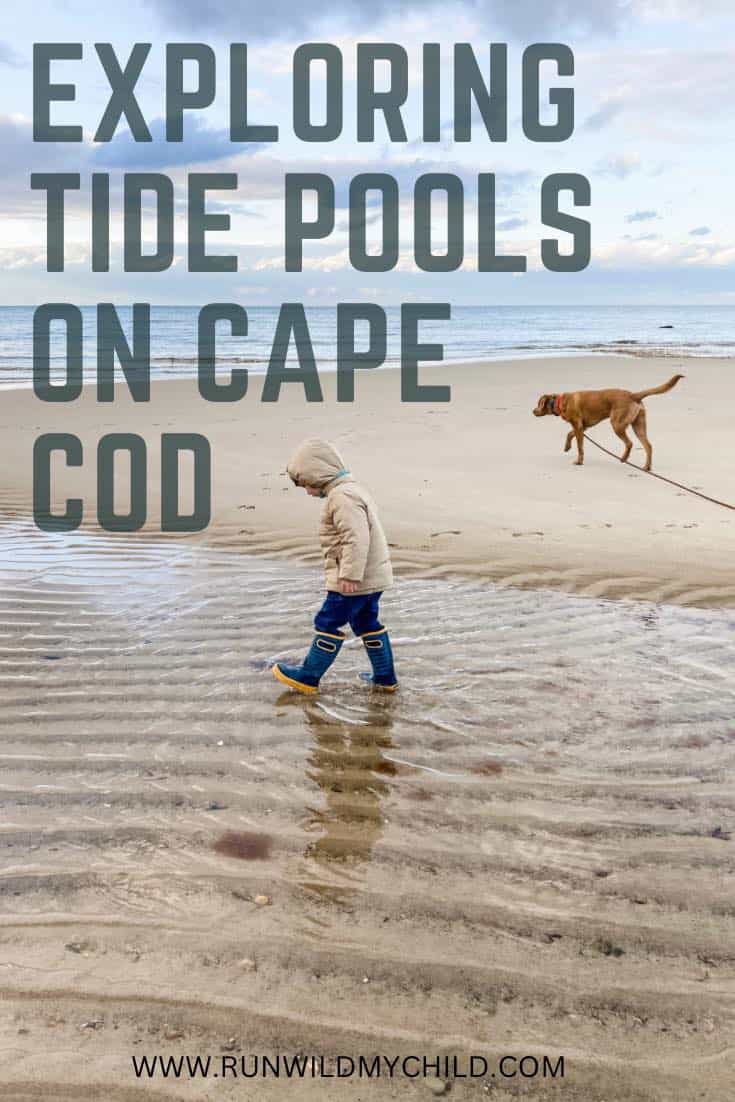
Exploring tide pools on Cape Cod
Have you ever explored a tide pool with your children? For the kids living here on Cape Cod, it is as common a pastime as going to the playground. These miniature underwater ecosystems, teeming with fascinating marine life and hidden treasures, offer an incredible opportunity for discovery, learning, and unforgettable family adventures.
As you embark on this enchanting journey with your children, you’ll witness their eyes light up with excitement as they uncover a wealth of marine creatures, from scuttling hermit crabs and colorful sea stars to elusive octopuses and vibrant anemones. While they may start off merely observing, their natural curiosity will soon drive them to ask questions, investigate further, and engage in hands-on learning experiences that ignite their sense of wonder.
So, if you are planning a visit to Cape Cod with your children, make sure to add tide pool exploration to your bucket list. Don’t worry; I’ll give you all the insider info about having a successful tide pool exploring excursion that you need to make your adventure a success!
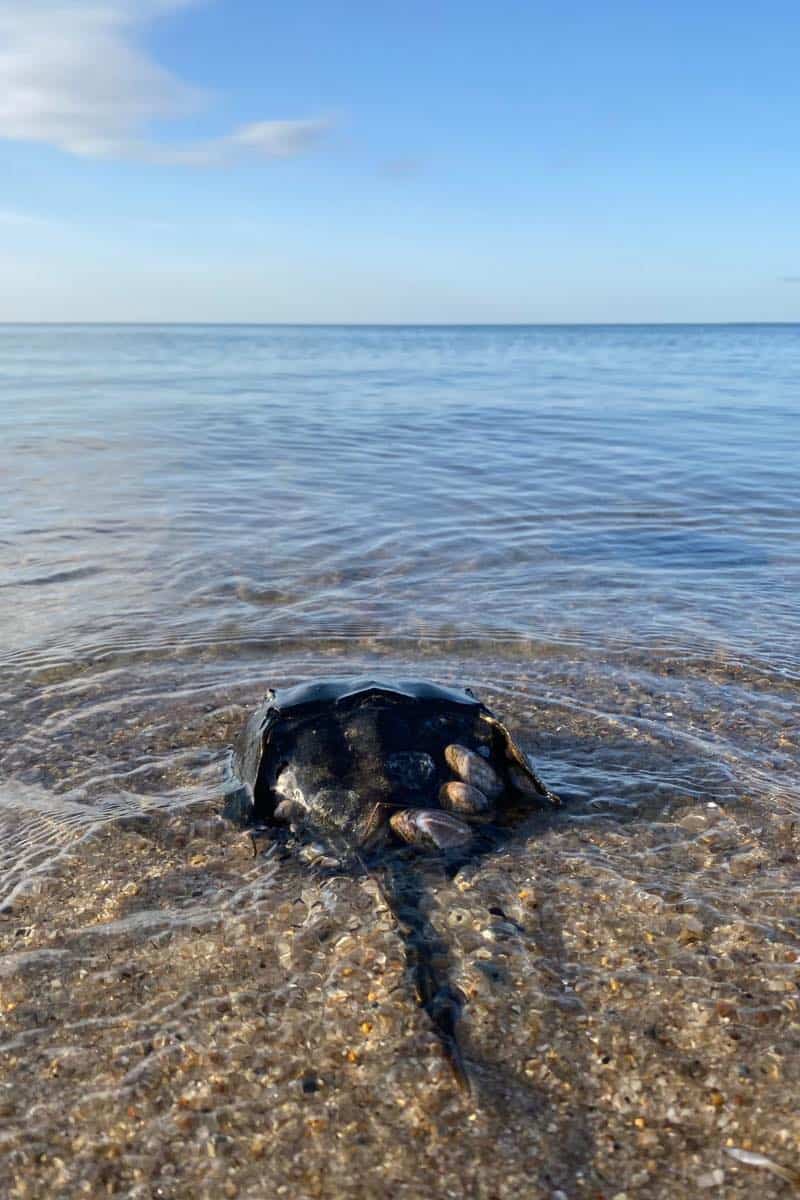
Why should you explore tide pools with your kids?
What is better than a day at the beach? Splashing in the salty waves, building epic sandcastles, and perfecting your boogie-boarding skills are great ways to spend time in the sun. But, if you visit the beach at low tide, you’ll be amazed by what you can find! And your kids may become obsessed with this new activity at the beach! As the ocean tide recedes, giant puddles of water appear and teem with sea life. Crabs, worms, fish, and eels can be found if you investigate. This activity is a perfect hands-on learning experience for children and adults alike!
Beyond the joy of discovery, exploring tide pools also offers a chance to educate your children about the delicate balance of our ecosystems and the importance of environmental stewardship. As they witness the interplay between different species and witness firsthand the effects of tides and currents, they’ll gain a deeper understanding of the interconnectedness of all living things and the need to protect and preserve these fragile habitats.
Moreover, this outdoor escapade provides a golden opportunity for families to disconnect from the digital world and reconnect with one another. As you huddle together, searching for hidden treasures or sharing stories of your own childhood adventures, the bond between parent and child strengthens, creating memories that will be cherished for years to come.
So, whether you’re a Cape Cod local or planning a family vacation to this idyllic destination, take a break from the usual tourist haunts and venture into the realm of tide pools. Equipped with a sense of wonder and a willingness to learn, you’ll embark on a remarkable journey where curiosity and joy merge, fostering a lifelong appreciation for the natural world. Let’s dive into the magical world of Cape Cod’s tide pools and discover the endless possibilities that await your family in nature’s captivating classroom.

What’s unique about the tide pools on Cape Cod?
The tide pools in Cape Cod possess a unique charm that sets them apart from other coastal regions. Cape Cod’s tide pools showcase an impressive biodiversity of marine life. From tiny hermit crabs and sea stars to elusive seahorses and fascinating sea slugs, the tide pools of Cape Cod offer a rich tapestry of species to discover. The variety of habitats, including rocky outcrops, sandy stretches, and tidal flats, contribute to this remarkable biodiversity. Each location offers its own set of geological features and ecological characteristics, providing a diverse range of exploration opportunities.
Cape Cod is renowned for its annual migrations of marine creatures, including horseshoe crabs and shorebirds. During certain times of the year, tide pool explorers may witness these fascinating natural phenomena as thousands of horseshoe crabs gather to spawn, or flocks of shorebirds feed along the shoreline. Such spectacles add an extra layer of wonder and excitement to the tide pool experience.
In addition to the abundant marine life, Cape Cod’s tide pools boast breathtaking natural beauty. The rugged coastline, picturesque beaches, and dramatic rocky formations create a stunning backdrop for exploring the tide pools. The serene atmosphere and stunning vistas make every visit to the tide pools of Cape Cod a truly memorable experience.
These special and unique characteristics of Cape Cod’s tide pools make them an exceptional destination for families to connect with nature, learn about marine life, and create lasting memories while exploring the captivating intertidal world.
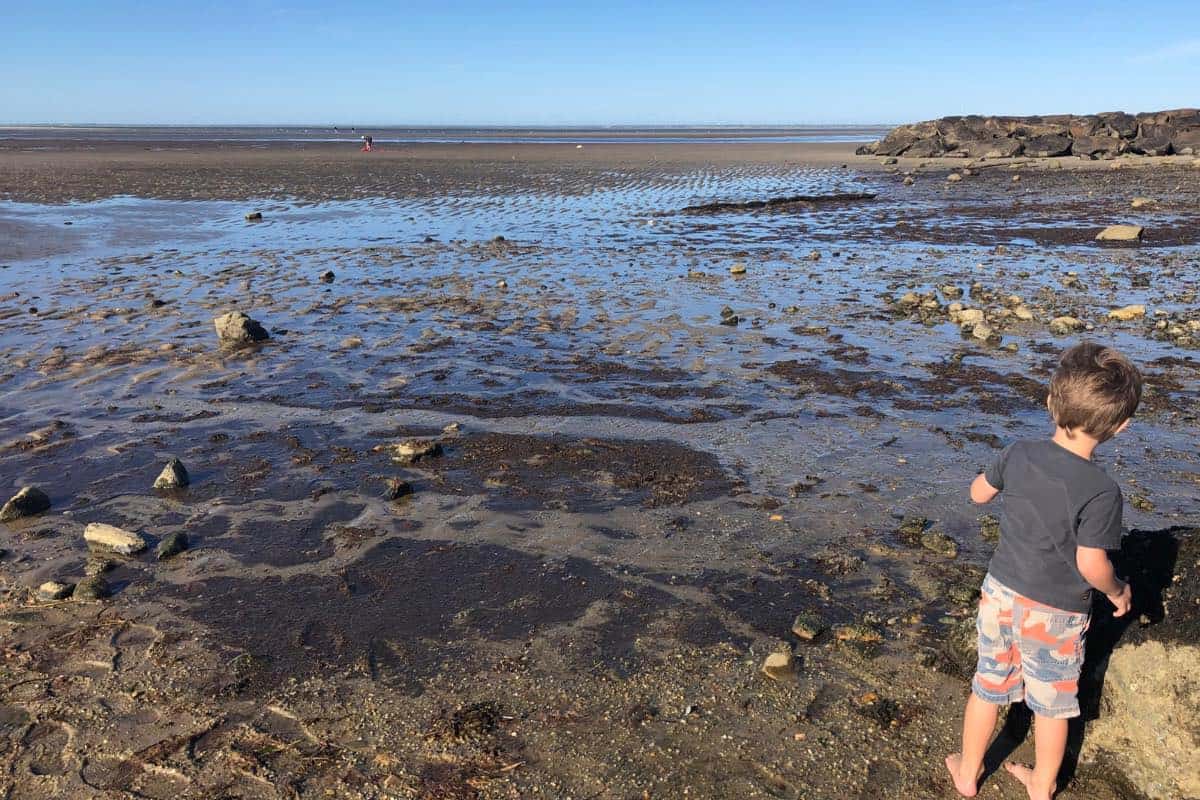
Best tide pools on Cape Cod for kids
Here on Cape Cod, specifically in Brewster, the exposed sand left after the tide recedes is called “the flats.” This expanse of the ocean floor is the largest in North America! You can walk over a mile into Cape Cod Bay at dead low tide. But, if you can’t make it to Brewster, plenty of other Cape Cod towns have tide pools worth exploring.
Great beaches for tide pools on Cape Cod
- Crosby Landing, Brewster
- Thumpertown Beach, Eastham
- Skaket Beach, Orleans
- Town Neck Beach, Sandwich
- Gray’s Beach, Yarmouth
- Corporation Beach, Dennis
You may notice these beaches are all on the north side of Cape Cod. We have found that the tide is much more extreme on the north side, so there are more tide pools! *Bonus, these beaches also tend to have calmer waves for your younger children to swim safely.
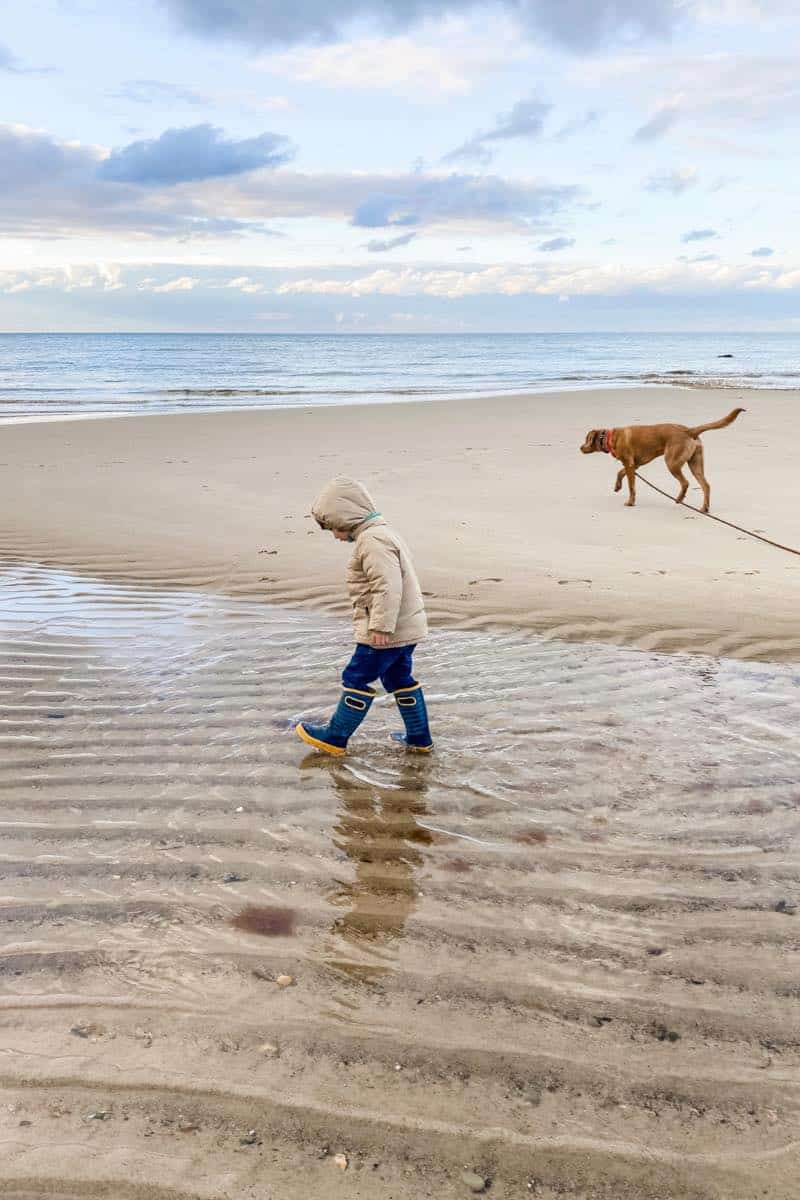
Does it cost money to go to beaches and tide pools on Cape Cod?
It depends on when and where you go. There are fifteen towns on Cape Cod, and every town has different rules and regulations for its beaches. Please check the town’s website to see if you can buy a beach pass for the day or if you need a pre-purchased beach sticker or pass. Sometimes, your luck might be that low tide is before or after the time of day that a beach pass is required. Another option is walking or cycling to a beach to avoid paying the fees.
Checking the tide
Once you’re ready to go on a tide pool exploring adventure and have chosen your location, it’s time to check the tide! When you visit the beach, it’s essential to be there at low tide or an hour or so before and/or after. The tide changes from high to low every six hours and varies about 45 mins daily, so the easiest way to check what the tide will be is to look at a tide chart. Some local businesses carry paper ones, and we always head to the Brewster General Store to pick one up. It stays posted on our fridge all summer long. Furthermore, another way to check the tide is by looking online. So, here is the most accurate website I’ve found.
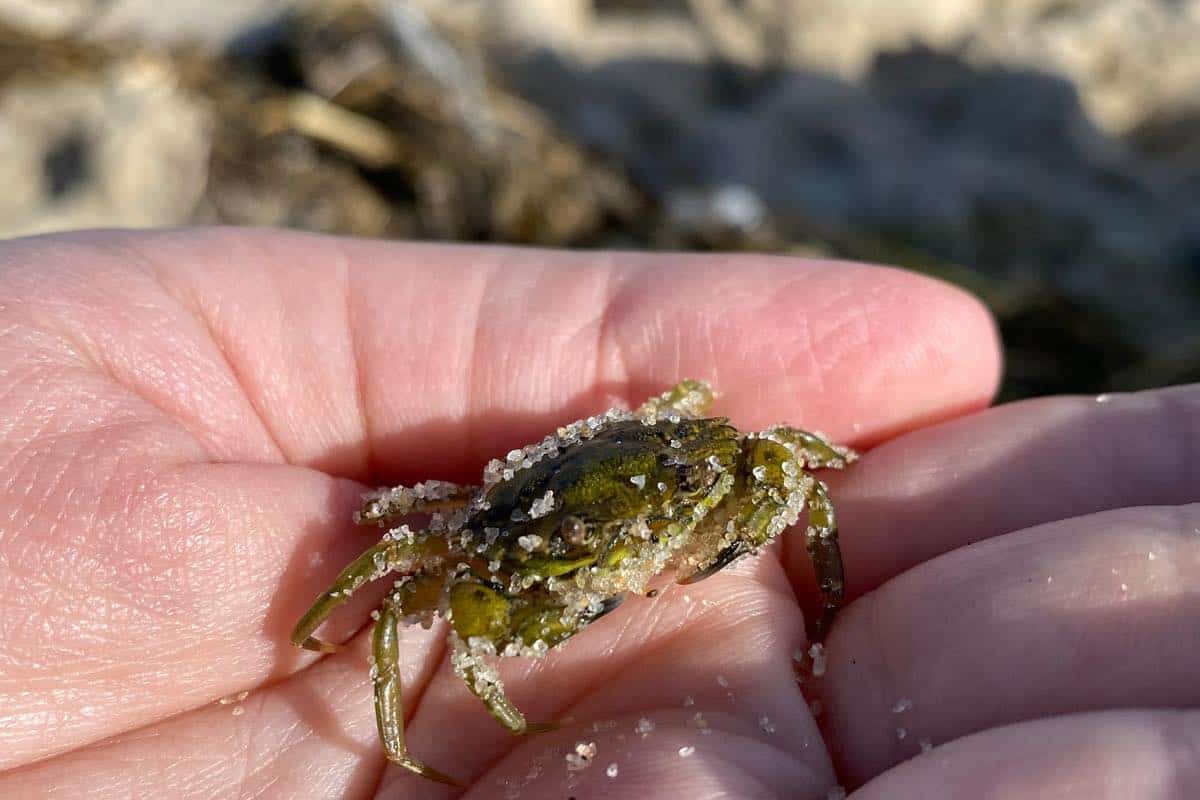
What to wear to explore tide pools on Cape Cod with your children
When you want to go on a tide pool exploration, it’s wise to be dressed appropriately. Bathing suits or water-repellant clothing is the best option; you’ll surely get wet when exploring a tide pool! One thing my children often wear, and I recommend, is water shoes with a rubber sole, or even shoes like Crocs. This way, you can climb over rocks, sometimes covered with sharp barnacles, without injuring your feet. When we explore tide pools in the colder weather (beach season is year-round when you live on Cape Cod!), my children wear their waders or insulated boots for extra protection and warmth.
Another item to consider wearing is a wide-brimmed hat. There isn’t any shade on the flats, so sun protection is essential! Also, a fun extra item that isn’t necessary would be polarized sunglasses. The polarization makes it easier to view the sea life under the water. Also, they provide additional protection for your eyes! If you wear sunscreen, please consider using a mineral-based and reef-safe brand. The chemicals used in many regular sunscreens harm coral and possibly other sea life.
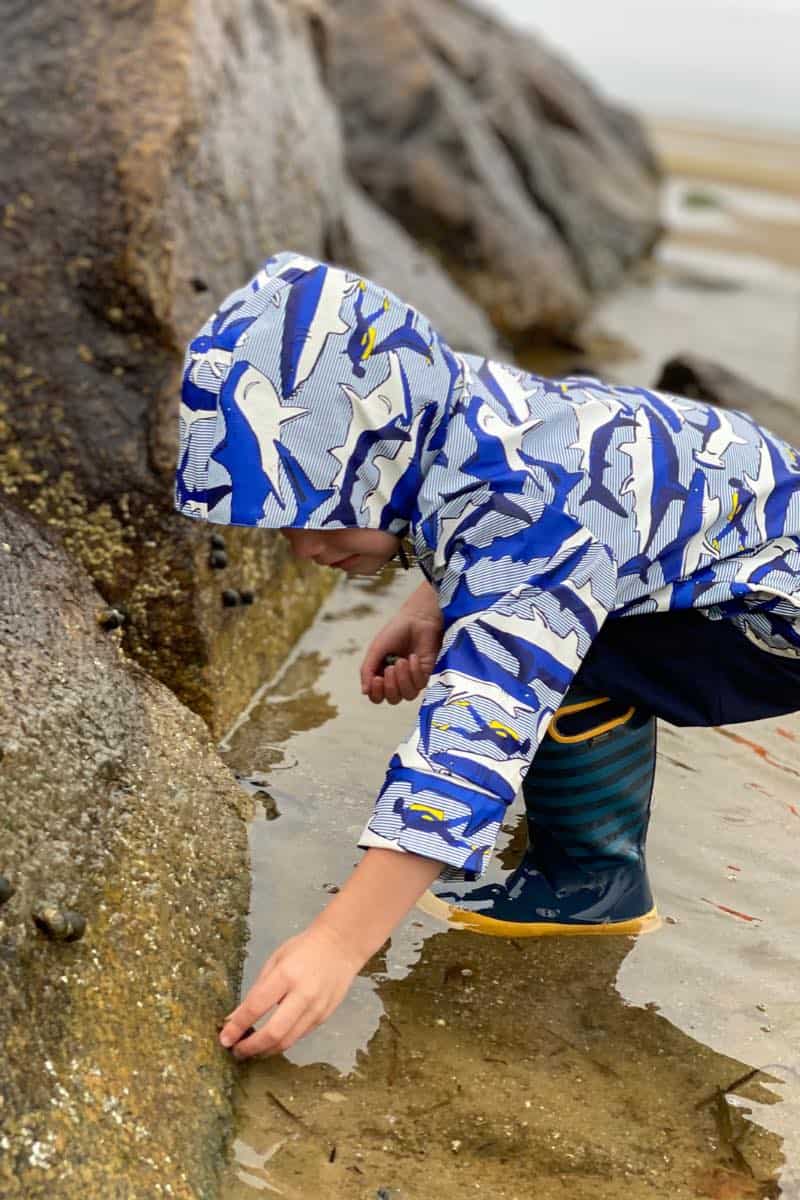
Supplies for exploring tide pools with children
Honestly, you don’t need any toys or supplies on your tide pool adventure. There have been many impromptu visits to the beach with my children when they didn’t bring anything. They used sticks, shells, rocks, and pieces of driftwood to entertain themselves.
However, if you are to bring anything, this is what I recommend:
- bucket for collecting treasures
- shovel for digging in the sand or picking up a crab
- net for catching minnows or sand shrimp
- field guide for identifying what you discover
You can also use items you already have in your home! Bring a Tupperware container as a bucket, a large serving spoon as a shovel, or a sieve as a net! Just remember, glass items on the beaches are not a good idea!
And, as always, for any adventure, I’d recommend always packing some snacks and water bottles to keep your kids fed and hydrated. You may also consider bringing a waterproof camera or a smartphone in a protective case to capture memories without risking damage.

What creatures will you find while exploring tide pools on Cape Cod?
The wonder of nature is that it is wild and unpredictable. This rule applies to tide pools on Cape Cod as well. Even after a lifetime of living on Cape Cod and regularly visiting tide pools, I still find species I never noticed before. I am constantly surprised by what I discover. So, here are some of the most common things you may find while exploring tide pools on Cape Cod:
- Hermit crabs – these small crabs inhabit the empty shells of other creatures, such as periwinkles, mud snails, or moon snails. They are found abundantly in tide pools and can range in size up to two inches.
- Asian shore crabs – this type of crab is an invasive species. They are commonly found burrowed underneath rocks in the shallow tide pools.
- Lady crabs – this type of crab is a fantastic swimmer. Beware, they are quite defensive, and their pinch is a little bit painful.
- Bloodworm – this type of sea worm has a translucent body, and you can see its reddish bodily fluids through its exterior.
- Decorator worm – this type of worm forms a protective casing over its exposed body. They construct it with bits of shell, sand, and seaweed.
- Ice cream cone worm – this type of worm creates a thin layer of sand around its body in the shape of a cone, hence the name.
- Scallops – the ones you will find on the beach are bay scallops, and they are smaller than the ones found in the deep ocean. These bay scallops have dozens of small blue eyes if you look closely!
- Oyster – this white shelled mollusk can be found in the bay on Cape Cod. They are known to produce pearls!
- Quahog – this hard shell clam can range in size from millimeters long up to 4 inches.
- Sand shrimp – this light colored small shrimp can walk on the ocean floor with their small front legs.
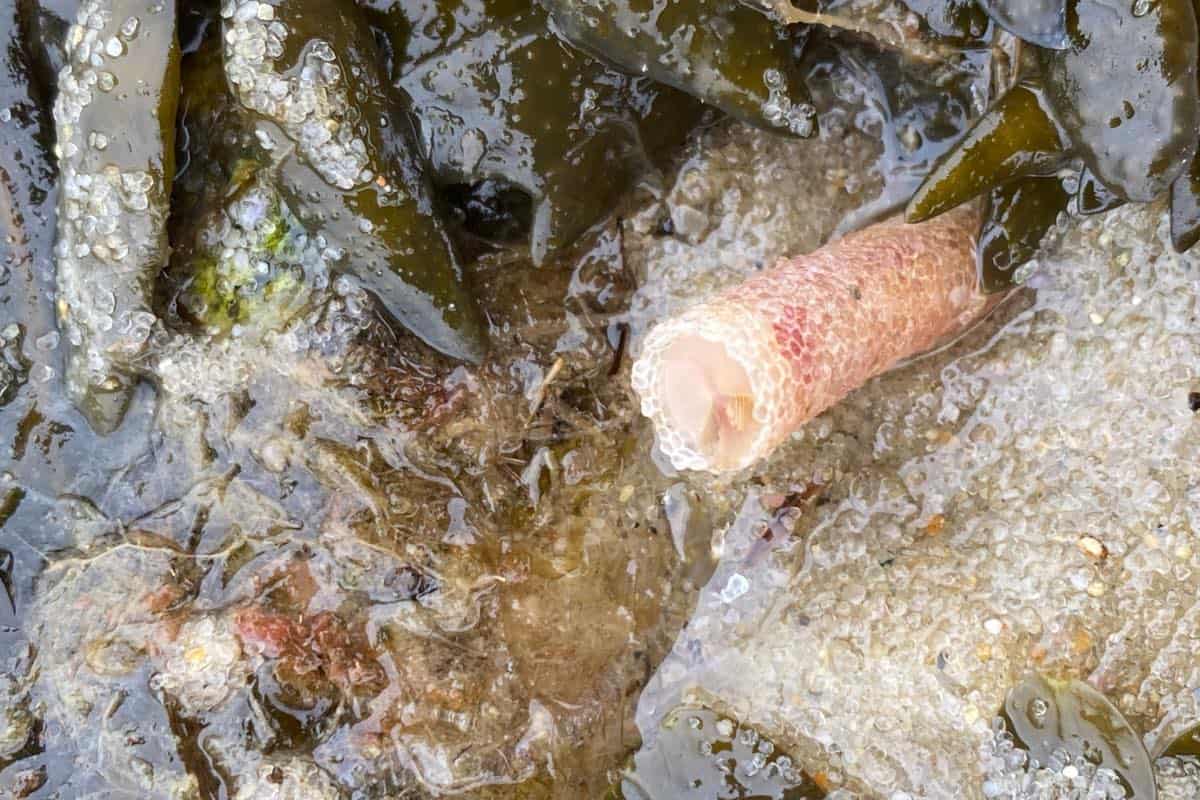
Tide pool etiquette
Don’t worry, there aren’t many rules associated with playing in the tide pools, but a few are for your child’s safety and the safety of the living creatures you may encounter. We want you to encourage your kids to interact with the tide pool environment in a safe manner (for both your kids and the wildlife).
Try not to touch and only pick up what you can identify
Try to teach your kids to observe and appreciate marine life without touching or disturbing it. I know this can be really hard! Kids learn by touching, but sometimes touching or picking up creatures can harm them or their delicate habitats. Encourage them to use their hands only when necessary, and even then, they should handle the creatures gently and with wet hands to avoid injuring them. Be sure to only pick up or touch what you know cannot hurt them (or hurt the thing you’re touching). You want to be sure that the creature can’t harm your child. A few types of worms have pincers, and they pack a punch with their bite!
Leave no trace
Emphasize the importance of leaving the tide pool area as they found it, without leaving any litter behind. Be sure to keep the creatures in their homes and take nothing and leave nothing. Remind your kids that tide pool creatures belong in their natural habitats. It’s important not to remove any animals, shells, or rocks from the tide pools. Explain that these creatures play vital roles in the ecosystem, and disrupting their environment can have negative consequences. This rule also applies to any rocks you turn over or other items you move in the tide pools. Show kids how to carefully turn over rocks to discover hidden creatures, but put them back exactly where they were.
Be gentle and mindful
These creatures you find are small, but it doesn’t mean they are insignificant. Encourage your kids to be aware of their surroundings and to step carefully to avoid crushing or damaging marine life. Remind them to stay on the rocks and sandy areas, and to avoid trampling on seaweed or fragile plants. Please remind your children to be gentle!
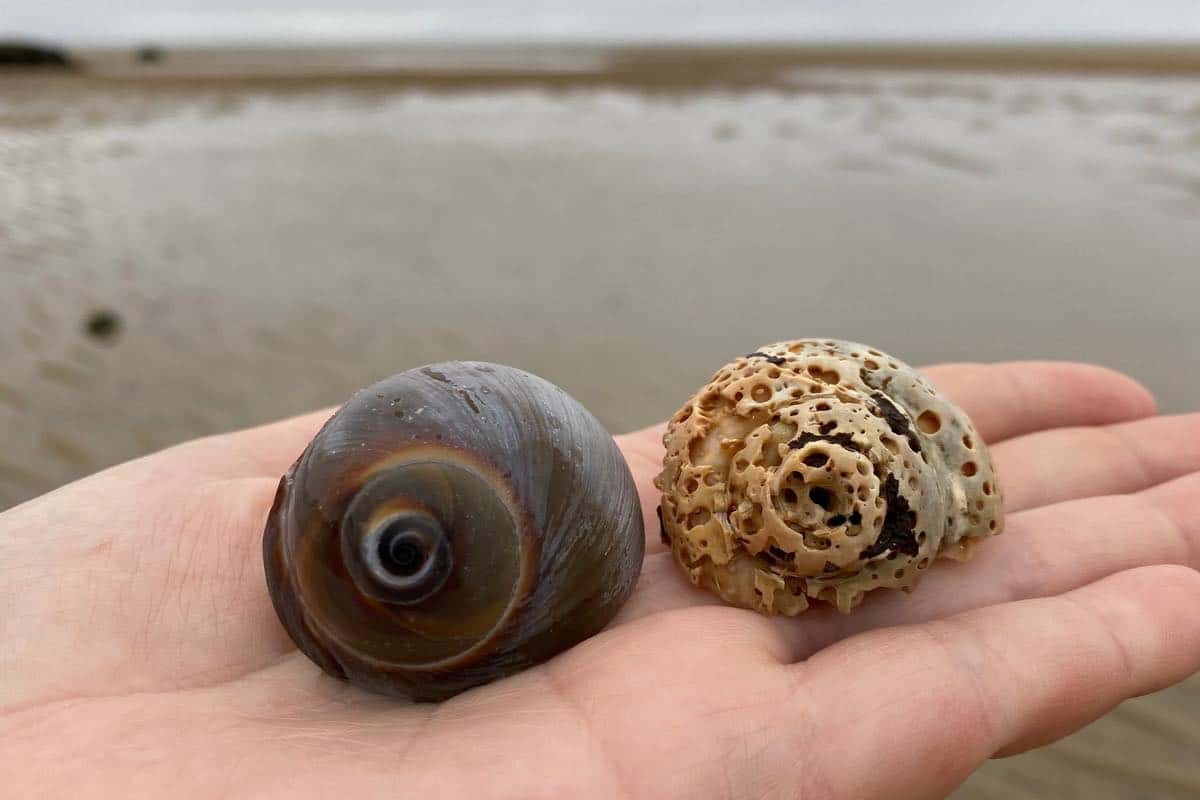
Places to visit to learn more about sea life on Cape Cod
After exploring the tide pools and beaches of Cape Cod, you should learn more about what you’ve found and other marine animals! Here are some places on Cape Cod that are worth the visit:
- Cape Cod Museum of Natural History, Brewster
- Salt Pond Visitors Center, Eastham
- Woods Hole Science Aquarium, Woods Hole
- Long Pasture Wildlife Sanctuary, Barnstable
- Wellfleet Bay Wildlife Sanctuary, Wellfleet
- WHOI Ocean Science Discovery Center, Woods Hole
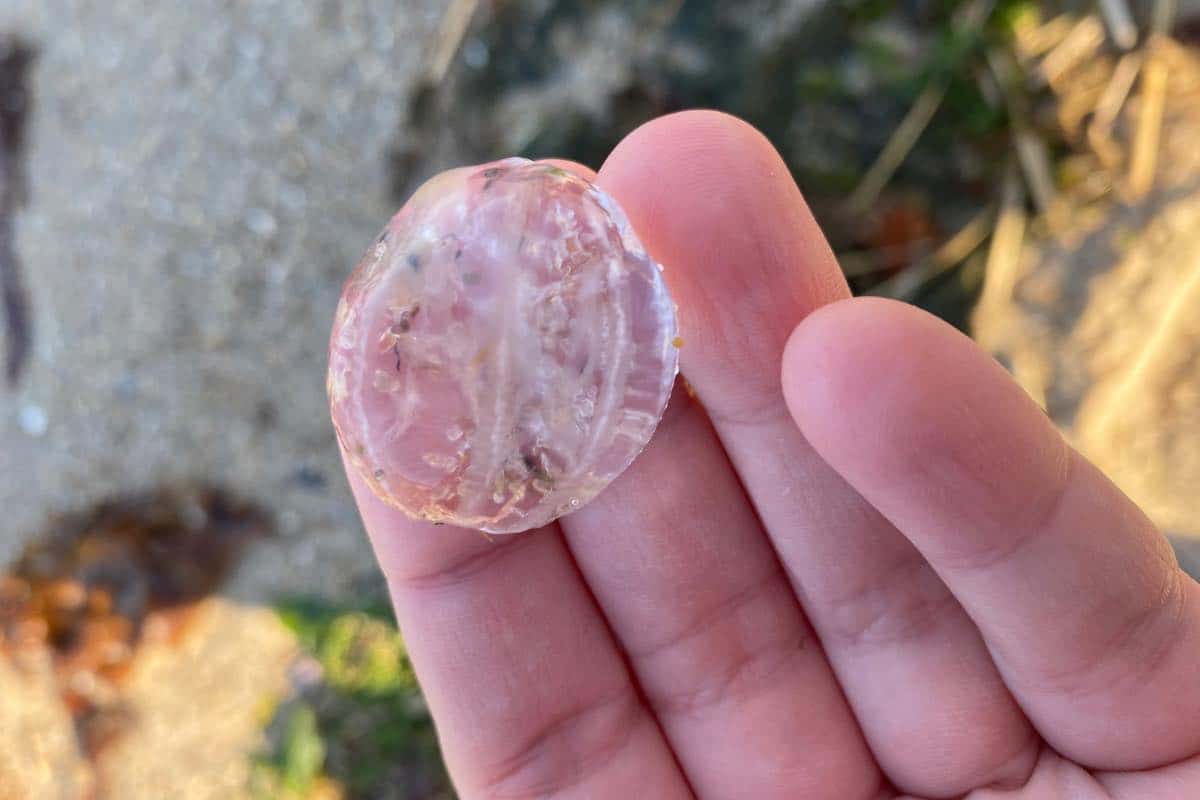
Recommended books for learning about tide pools
- A Field Guide to Cape Cod: Including Nantucket, Martha’s Vineyard, Block Island, and Eastern Long Island by Patrick Lynch
- Mudflat Mania by Irene Ledwith
- The Tide Pool Awaits by Candace Fleming
- At Home in the Tide Pool by Alexandria Wright
- Exploring Tide Pools with Kids by Monica Halpern
- Seaweeds of Cape Cod Shores by Gilbert Newton
- In One Tidepool: A Rhyming Marine Biology Book by Anthony Fredericks
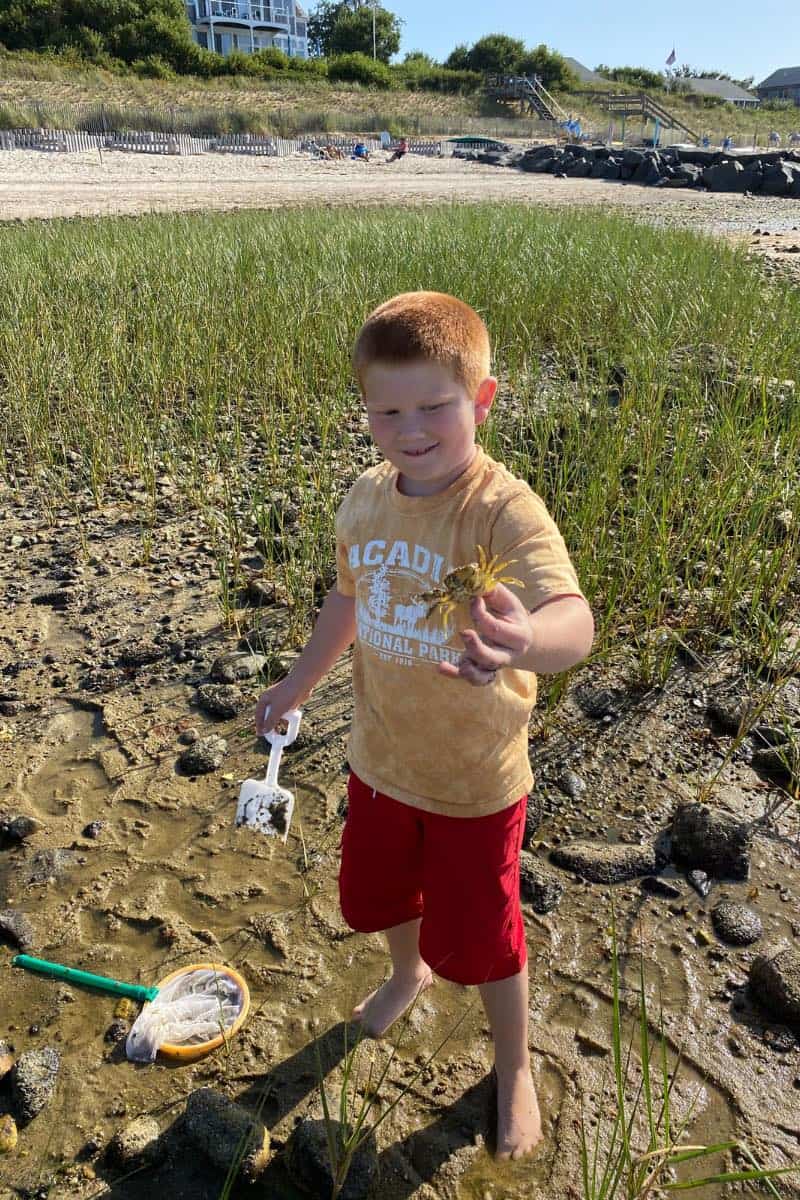
Are you ready to go explore tide pools on Cape Cod?

About the author
Lissy lives near the ocean on Cape Cod, Massachusetts, with her husband, 2 rambunctious boys (aged 4 & 7), and an ever-growing number of pets. She grew up walking nature trails and finding joy in the beauty of nature. She now shares that love for local adventures with her community through her blog, “Get Outside Cape Cod.” Lissy knows that everyone can benefit from spending more time outdoors and wants to inspire and support families to do just that!
You can find more from Lissy in the following online locations:
Instagram: @getoutsidecapecod
Website: Get Outside Cape Cod
Facebook: @getoutsidecapecod
RWMC Posts: Lissy Perna
Comments
One response to “Exploring Tide Pools on Cape Cod”
[…] tidal pools at low […]

Leave a Reply